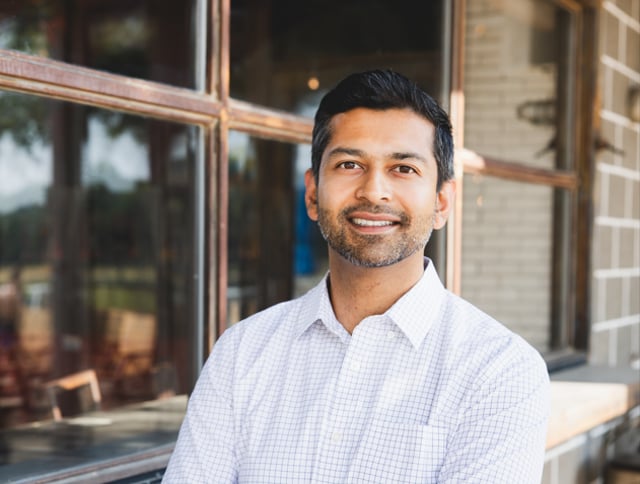5Qs for Trademark’s Sunny Patel on retail real estate’s new purpose
Throughout its 30-year history, Fort Worth-based Trademark Property Company has set itself apart as a retail real estate innovator with projects such as Annapolis Town Center in Maryland and The Woodlands in the Houston metro. It is currently in the middle of a 21st Century overhaul of Alpharetta, Ga.’s North Point Mall, so we spoke with the company’s senior VP of institutions and developments, Sunny Patel, about what’s driving the evolution of retail centers.
Sunny, tell us two or three things that a mature, regional-level mall or open-air center needs to get rid of.
First, look at parking. Parking requirements were much higher years ago, but they’ve gone down. You have to rethink the space and carve out any space you can to develop something new.
Secondly, you need to take a look at large-format tenants with brands that are out of touch.. They may be in the middle of a 10-year lease and are not going to leave, but if they’re doing okay you can try to move them to a different part of the center.
Fitness tenants with a 20,000-sq.-ft. box probably won’t fit in a mixed-use center. But we’ve found that smaller-space boutique fitness tenants like barre or boxing don’t take up much parking space and attract members who’ll cross-shop in the center. If you pay $200 a month for a boutique fitness membership, you’ll likely shop at the Whole Foods.
Now tell us two or three things it’s essential for them to install.
More and better public spaces if they don’t have it. Store front re-dos. You have to do a lot of digging into the community. Especially in a secondary market, you have to really find out what the local market needs are.
We keep in constant communication with our tenants. Are they expanding their product lines to meet the needs of nontraditional consumers? How can we involve them in events? We also keep in close touch with local communities and organizations to plan events.
2013 versus 2023, how and why do consumers think differently about what they want and need from their retail centers?
People are looking for an experience. They want to experience something they can’t get online. Brands like Sephora and Dick’s House of Sports are doing a great job with this, so we do our best to mix necessity shopping with experiential tenants. Nowadays, people are looking at their retail outlets as more than places to buy things. They’re now fulfillment centers, as well. Retail has become the last mile.
Trademark is underway on a complete overhaul of North Point Mall, a once dominant regional draw in the Atlanta metro whose traffic migrated to newer mixed-use centers like Avalon. What key ingredients are you adding to turn things around at North Point?
There’s a lot of retail real estate in America. Do we need a 2 million-sq.-ft. sf mall everywhere? Room could be made for something else, and that’s what we’re pursuing at North Point. We’re focusing on creating essential change with additional uses that breathe life into the site.
We’re going to add housing and hotels, and we’re taking a high-level approach to determine what retail brands we’ll include. Maybe half of the original property goes away; maybe only 20%. We’re working closely with the city of Alpharetta on what develops, and we’re getting feedback from the local community.
COVID effected a radical change in home-office population percentages Monday through Friday. Did that lead you to further re-think plans you had already made for some of your renovations?
COVID has changed things. A lot more folks are spending a lot more time at home, and they need to get out of the home for both business meetings and personal experiences. So retail centers in the right neighborhoods, too, need to evolve and change and answer those needs.







